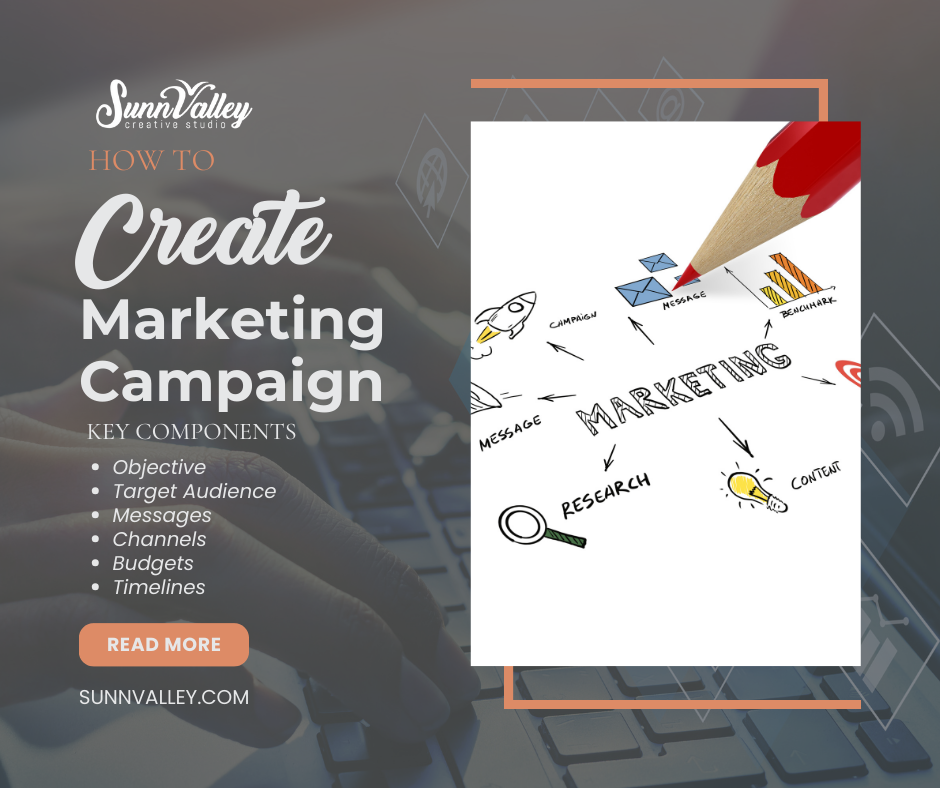Looking for tips for building a marketing campaign? Here is a step-by-step guide to help you get your thoughts together. Marketing campaigns can increase brand awareness, generate leads, and drive sales. A well-planned marketing campaign (see article with 6 essential steps) can help you reach your target audience effectively and achieve your business goals. In this blog post, we will walk you through the process of creating a compelling marketing campaign from start to finish, with practical examples to illustrate each step. Here is an article on making our campaign compelling.

What Is a Marketing Campaign?
A marketing campaign is a coordinated series of actions designed to promote a product, service, or brand over a specific period. It involves using various marketing channels and tactics to reach and engage your target audience. Successful marketing campaigns are strategic, goal-oriented, and tailored to the unique needs of the audience. Here is another article on how to create a marketing plan.
The Key Components of a Marketing Campaign
- Objective: The primary goal you want to achieve with your campaign.
- Target Audience: The specific group of people you aim to reach.
- Message: The core idea or value proposition you want to communicate.
- Channels: The platforms and media through which you will deliver your message.
- Budget: The financial resources allocated to the campaign.
- Timeline: The duration of the campaign and key milestones.
Step-by-Step Guide to Building a Marketing Campaign
1. Define Your Objective
The first step in building a successful marketing campaign is to define your objective. What do you want to achieve? Objectives can vary widely, from increasing brand awareness to generating leads or boosting sales. Your objective should be specific, measurable, achievable, relevant, and time-bound (SMART).
Example: Coca-Cola’s “Share a Coke” Campaign
Objective: Increase brand engagement and boost sales by personalizing the customer experience.
2. Identify Your Target Audience
Next, identify your target audience. Understanding who you are trying to reach is crucial for crafting a message that resonates. Consider factors such as demographics, psychographics, behavior, and needs.
Example: Nike’s “Dream Crazy” Campaign
Target Audience: Young athletes and sports enthusiasts who are inspired by stories of perseverance and achievement.
3. Craft Your Message
Your campaign message should be clear, compelling, and aligned with your brand values. It should address the needs and interests of your target audience and include a strong call to action.
Example: Apple’s “Shot on iPhone” Campaign
Message: Highlight the superior camera quality of the iPhone by showcasing stunning photos taken by real users.
4. Choose Your Channels
Select the marketing channels that will best reach your target audience. This could include social media, email, search engines, print media, TV, radio, and more. Consider where your audience spends their time and how they prefer to receive information. Read this article about email marketing.
Example: Airbnb’s “We Accept” Campaign
Channels: Social media, online video platforms, and digital advertising to reach a global audience.
5. Allocate Your Budget
Determine the budget for your campaign. Allocate funds across different channels based on their potential impact and cost-effectiveness. Make sure to leave room for contingencies and adjustments as the campaign progresses.
Example: Old Spice’s “The Man Your Man Could Smell Like” Campaign
Budget: A significant portion is allocated to TV commercials during major sporting events, supplemented by social media engagement.
6. Develop Creative Assets
Create the visual and written content for your campaign. This includes videos, images, graphics, copy, and any other materials needed to convey your message. Ensure that your creative assets are high quality and consistent with your brand identity.
Example: Dove’s “Real Beauty” Campaign
Creative Assets: Authentic images of real women, accompanied by empowering messages about beauty and self-confidence.
7. Plan and Execute
Develop a detailed campaign plan that outlines the timeline, tasks, and responsibilities. Launch your campaign according to this plan, ensuring that all team members are aligned and ready to execute their parts effectively.
Example: ALS Association’s “Ice Bucket Challenge”
Plan: Encourage participants to film themselves pouring a bucket of ice water over their heads, post the video on social media, and challenge others to do the same within 24 hours.
8. Monitor and Adjust
Once your campaign is live, continuously monitor its performance. Use analytics tools to track key metrics such as engagement, conversions, and ROI. Be prepared to make adjustments based on the data and feedback you receive.
Example: Spotify’s “Wrapped” Campaign
Monitor: Analyze user engagement and feedback to refine the campaign and introduce new features each year.
9. Measure Success
After the campaign has ended, evaluate its overall performance against your initial objectives. What worked well? What could be improved? Use these insights to inform future campaigns and refine your marketing strategies.
Example: Red Bull’s “Stratos” Campaign
Measure Success: Evaluate the campaign’s reach, media coverage, and impact on brand perception and sales.
Conclusion
Building a successful marketing campaign involves careful planning, strategic thinking, and ongoing evaluation. By defining clear objectives, understanding your target audience, crafting a compelling message, choosing the right channels, and continuously monitoring performance, you can create campaigns that effectively promote your brand and achieve your business goals.
Remember, a successful marketing campaign is not just about reaching a wide audience; it’s about connecting with the right people in meaningful ways. By following the steps outlined in this guide and learning from real-world examples, you can develop marketing campaigns that resonate with your audience and drive lasting results.

